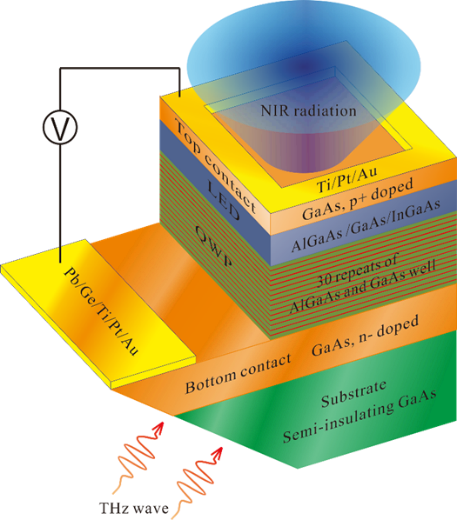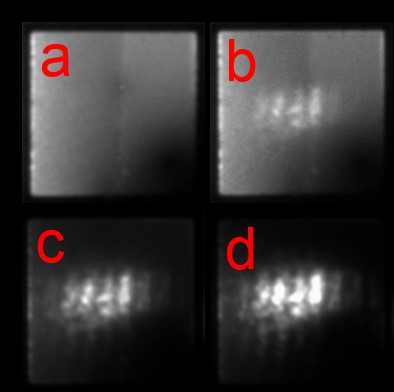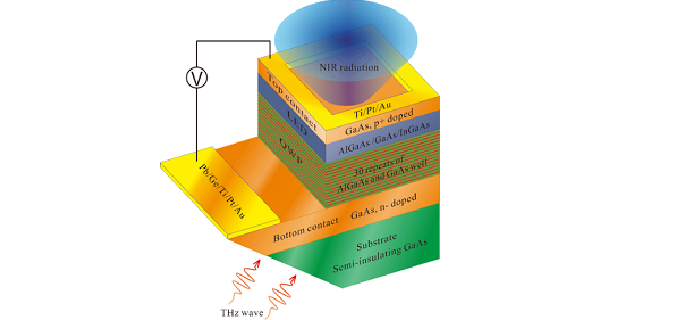Ultra-high-speed terahertz imaging array chip successfully developed in SIMIT
Date:19-07-2017 | 【Print】 【close】
High-speed imaging technology is one of the important research directions in the application of terahertz (THz) technology. It can be used in the fields of material analysis, high-energy physical process analysis, biomedical imaging and security inspection. However, the lack of low-temperature matching readout circuit makes the design of fast response photon-type focal plane array detector very difficult. This lead to the development of THz high-speed and real-time imaging technology research progress slowly. In order to solve this problem, the research team led by Prof. Juncheng Cao of Shanghai Institute of Microsystem and Information Technology, Chinese Academy of Sciences used molecular beam epitaxy to stack THz quantum well detector (THz QWP) and light emitting diode (LED). A THz frequency upconversion imaging chip with no pixel imaging was fabricated (THz QWP-LED, as shown in Figure 1). The peak detection frequency of the chip is 5.2 THz. The equivalent noise power is 5.2 pW / Hz0.5, and the equivalent imaging pixel is 240 × 240. The linkage imaging experiment with the THz quantum cascade lasers (THz QCL) has been completed. It is found that the real-time imaging of THz QCL spot diffraction fringes in the order of tens of microns can be achieved (Figure 2). It completes single frame high speed imaging of THz QCL spot within 500 ns. Related research results are published in Scientific Reports 6, 25383 (2016).
The successful development of the imaging chip is an important progress, which is of great significance to the development of high-speed and high-energy physical process, material analysis and biomedical imaging.


